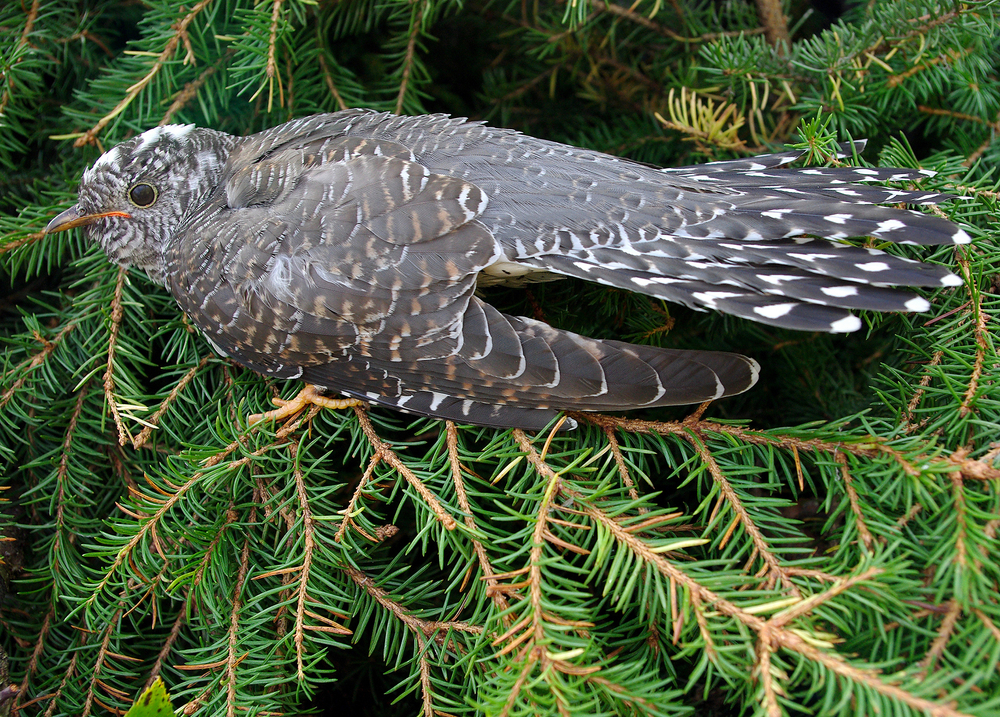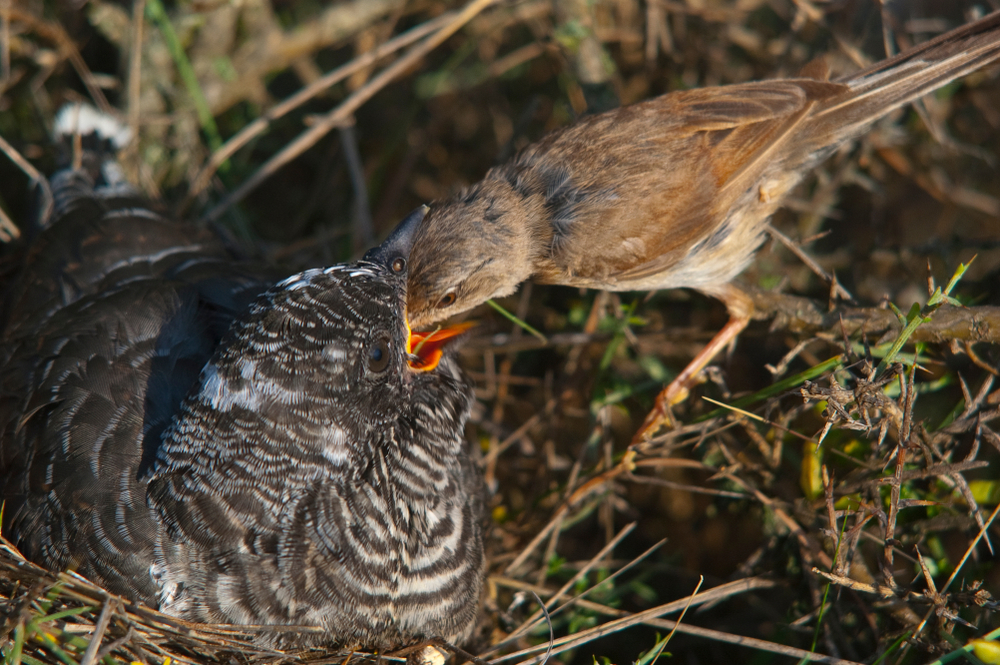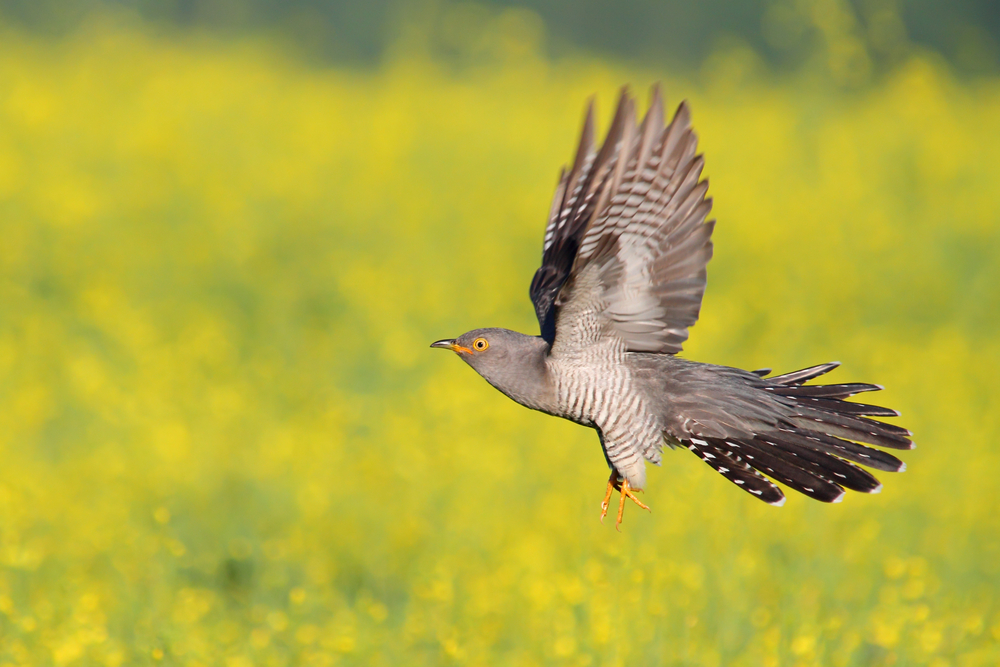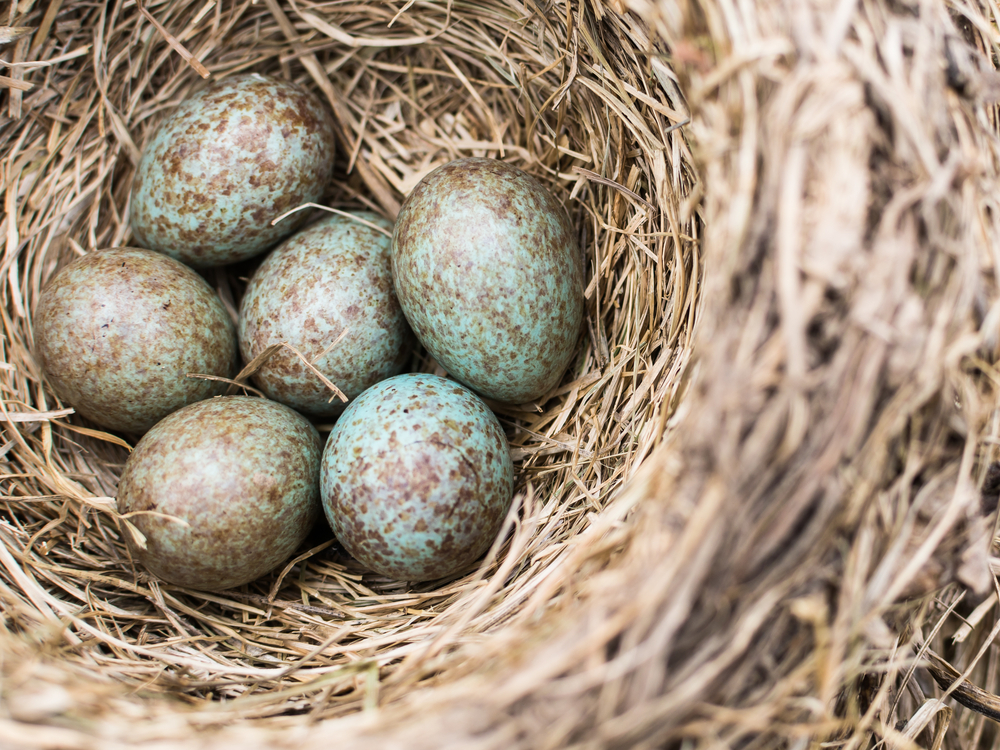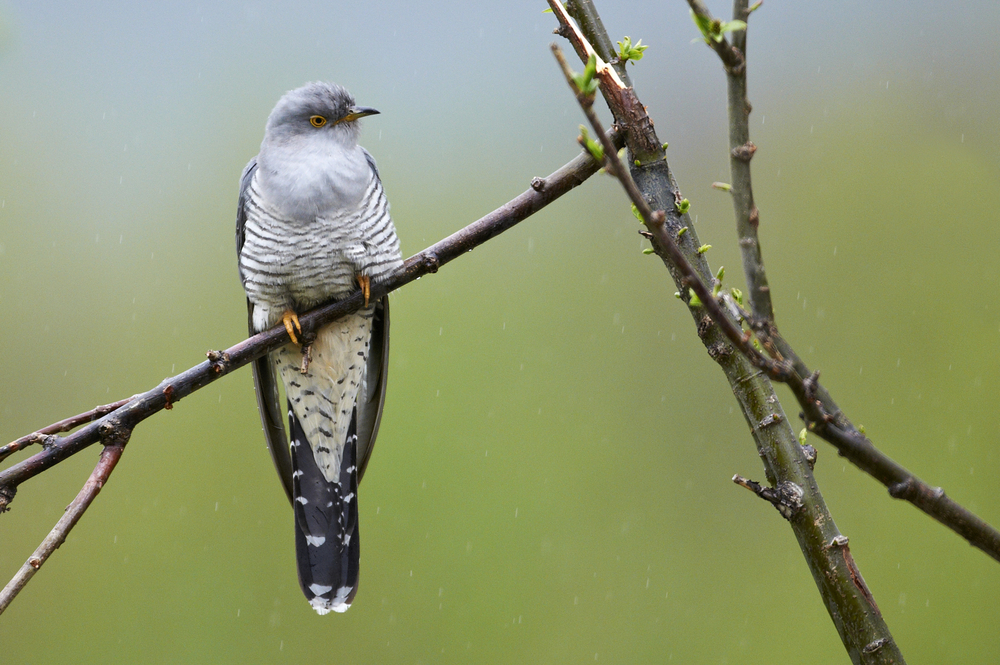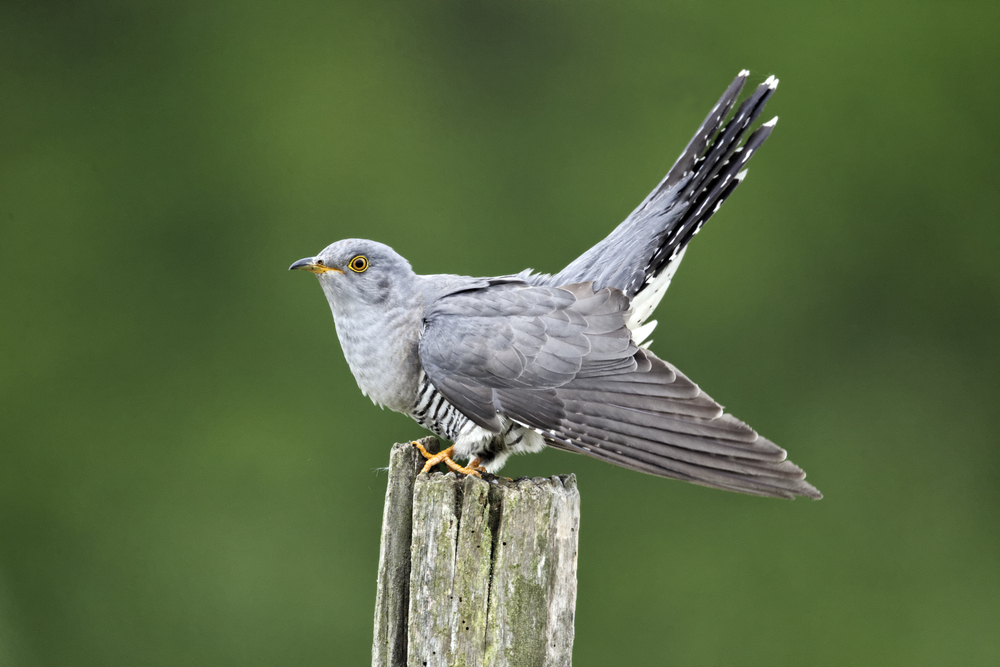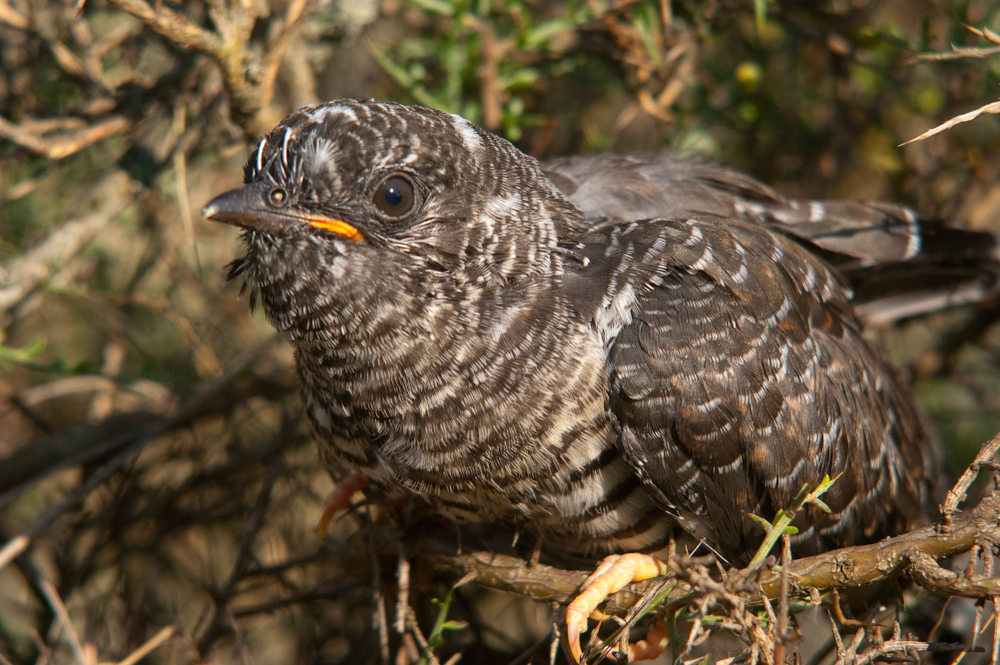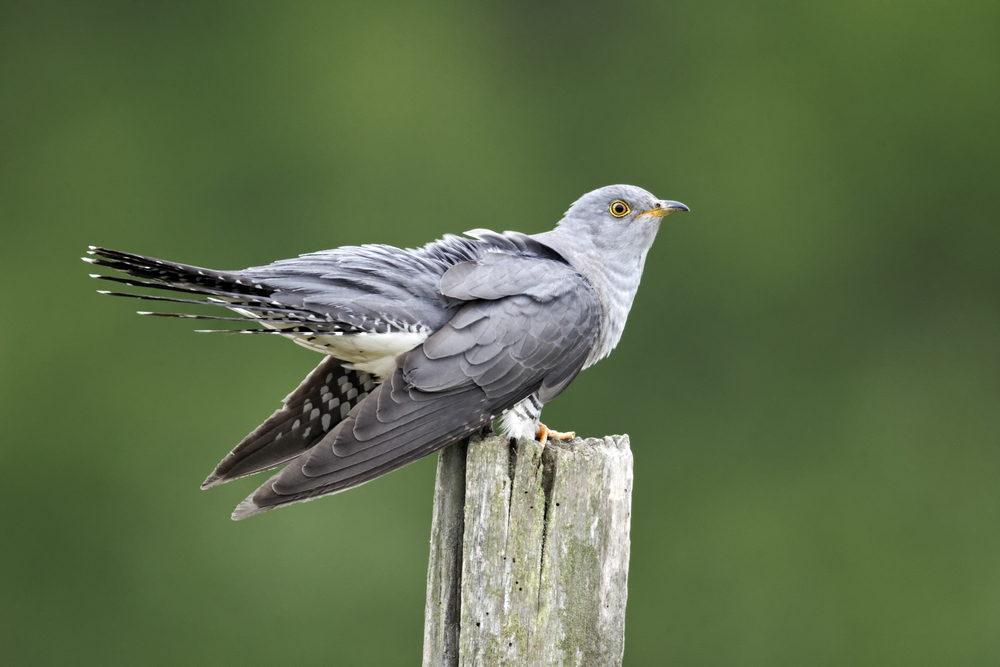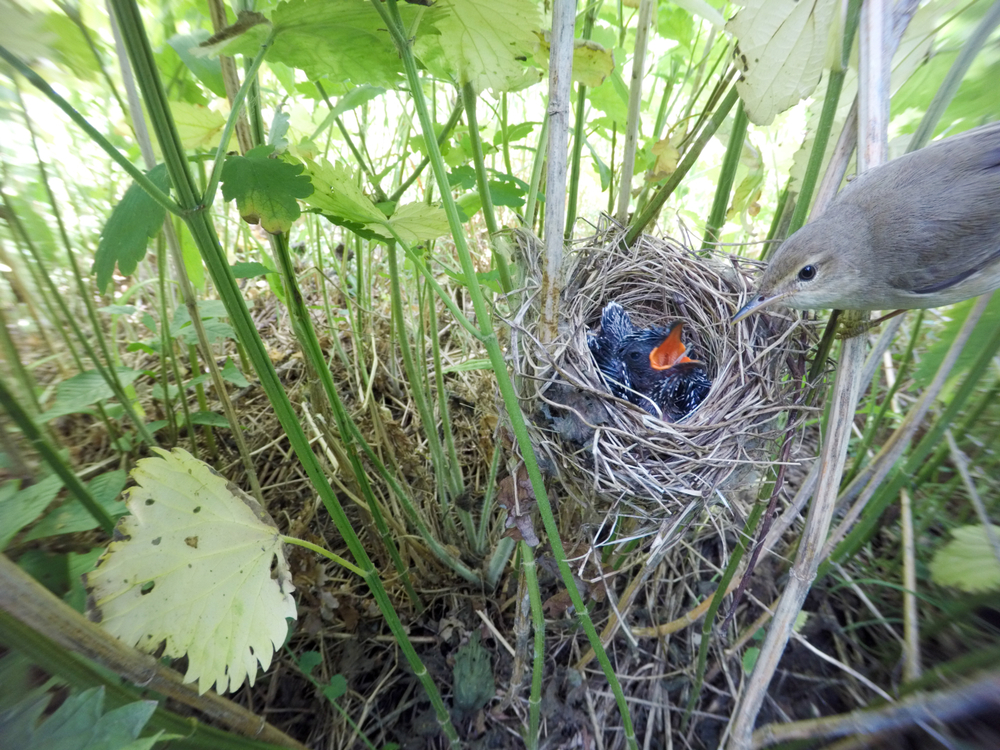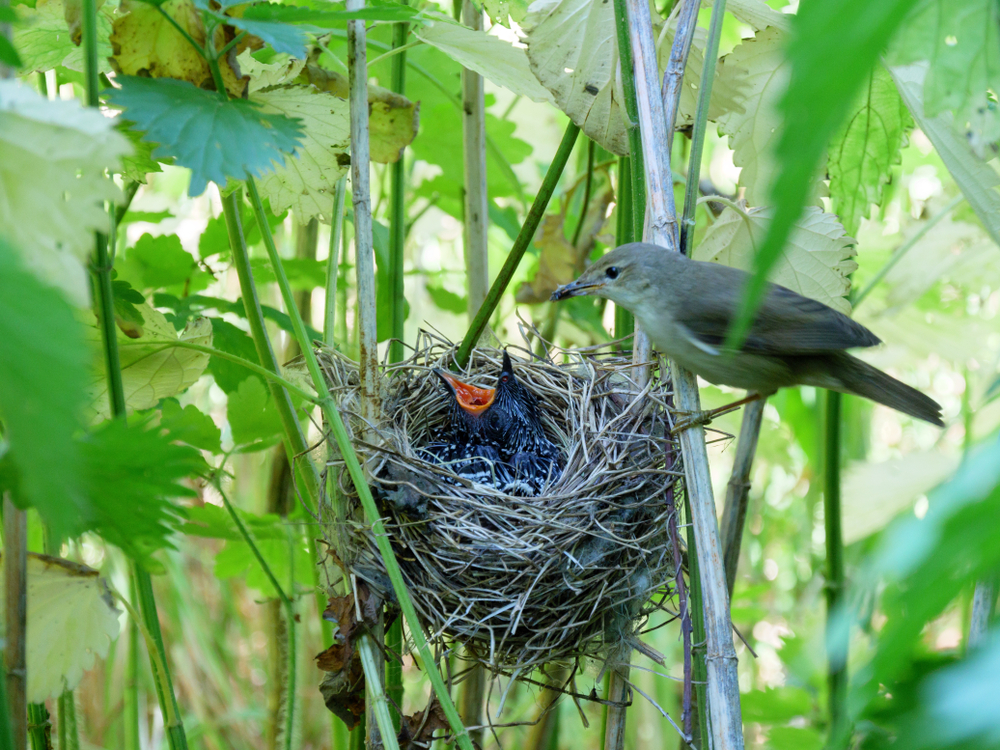About
The Cuckoo Bird, scientifically known as Cuculus canorus, is a member of the Cuculidae family within the Animal Kingdom’s class Aves. It belongs to the order Cuculiformes, which also includes an array of other cuckoo species and related birds like anis and roadrunners. Cuckoos are famous for their unique reproductive strategy known as brood parasitism.
The cuckoo bird is a medium-sized bird with a long tail, slender body, and pointed wings. They exhibit sexual dimorphism, with males often having glossy plumage and vibrant colors, while females typically sport more subdued hues. Cuckoos are found in diverse habitats worldwide, including forests, woodlands, grasslands, and even urban areas.
One of the most fascinating aspects of cuckoo behavior is their reproductive strategy. Instead of building their own nests and raising their young, many cuckoo species are brood parasites. They lay their eggs in the nests of other bird species, often choosing hosts that are smaller or less aggressive. The cuckoo chick hatches earlier and typically outcompetes the host’s offspring for food, often resulting in the host parents unwittingly raising the cuckoo chick as their own.
Conservation Needs and Status
Cuckoo species face various conservation challenges, including habitat loss, climate change, and declines in insect prey populations. Changes in land use and agricultural practices have led to habitat fragmentation and reduced nesting sites for cuckoos. Additionally, some cuckoo species are targeted by humans for hunting or trapping.
The conservation status of cuckoo species varies depending on the specific species and region. While some populations may be stable or increasing, others are experiencing declines and are at risk of extinction. The International Union for Conservation of Nature (IUCN) Red List assesses the conservation status of individual cuckoo species, with some listed as least concern while others are categorized as vulnerable, endangered, or critically endangered.
Conservation efforts aimed at protecting cuckoos involve habitat preservation, restoration of degraded habitats, and sustainable land management practices. Additionally, monitoring populations, studying their ecology, and raising awareness about the importance of conserving cuckoos and their habitats are essential for their long-term survival. Continued research and conservation actions are necessary to ensure the persistence of cuckoo species in the wild.
Physical Characteristics
The Cuckoo Bird, belonging to the family Cuculidae, is renowned for its distinctive call that heralds the arrival of spring in various parts of the world. There are many species of cuckoo, but one of the most commonly recognized is the Common Cuckoo (Cuculus canorus). This bird is fascinating not only for its melodious call but also for its intriguing behavior of brood parasitism, where it lays its eggs in the nests of other birds.
Size and Weight:
- Length: The Common Cuckoo ranges from 12.6 to 14.2 inches (32 to 36 centimeters) in length.
- Weight: They weigh approximately 3.5 ounces to 4.4 ounces (100 to 130 grams), with slight variations between males and females and among different populations.
Physical Characteristics:
- Coloration: Adult males typically have a grayish plumage with a slightly barred underside, while females can vary significantly. There are two main morphs of females: one gray, similar to males, and the other reddish-brown with dark barring, better mimicking some of the host species they parasitize.
- Tail and Wings: Cuckoos have a long tail that is used for agile maneuvering through their forest habitats, and pointed wings that enable fast, direct flight. The tail feathers are tipped with white spots, which are more pronounced in males.
- Bill: The bill is slender and slightly curved downwards, adapted for their insectivorous diet. It allows them to pluck insects from leaves and branches as well as catch them in flight.
- Eyes: They have bright yellow or orange eyes, giving them a keen sight for spotting prey and navigating through their environment.
- Legs and Feet: Their legs are short with zygodactyl feet (two toes pointing forward and two backward), which aids in perching on branches and grasping prey.
- Vocalization: Although not a physical trait, the cuckoo’s call is one of its most distinctive features. The male’s call is the familiar “cu-coo” sound, which has been immortalized in clocks and cultural references. Females have a bubbling chuckle, less often heard.
- Adaptations for Brood Parasitism: The cuckoo’s reproductive strategy involves laying eggs that mimic the appearance of their host’s eggs. This mimicry extends to the timing of egg laying and the speed at which cuckoo eggs hatch. The young cuckoo chick is also adapted to evict the host’s eggs or chicks from the nest to monopolize the food provided by the unsuspecting foster parents.
The Cuckoo Bird’s unique behaviors, combined with its distinctive appearance and sound, make it a fascinating subject of study in avian biology and ecology. Its presence across various landscapes, from woodlands to open country, underlines the adaptability and ecological significance of this enigmatic bird.
Reproduction
The reproductive cycle of the cuckoo bird, known for its brood parasitism behavior, is fascinating and unique among avian species. Here’s an overview:
Migratory Behavior: Cuckoos are migratory birds, often traveling long distances between breeding and wintering grounds. Their reproductive cycle is closely tied to seasonal cues and environmental conditions in both their breeding and non-breeding habitats.
Selection of Host Species: Unlike most birds, cuckoos do not build nests or raise their own young. Instead, they lay their eggs in the nests of other bird species, known as host species. Cuckoos are highly specialized in selecting suitable host species, often targeting those with similar egg coloration and nest characteristics to minimize the risk of rejection.
Egg Laying: Female cuckoos carefully observe potential host nests, waiting for an opportunity to approach and lay their eggs discreetly. Cuckoo eggs typically mimic those of the host species, aiding in camouflage and reducing the likelihood of detection by host parents.
Egg Mimicry: Cuckoos have evolved remarkable adaptations for egg mimicry, producing eggs that closely resemble those of their chosen host species. This deceptive strategy increases the chances of their eggs being accepted and incubated alongside those of the host, ensuring their offspring’s survival.
Incubation and Hatching: Once the cuckoo egg is laid in the host nest, host parents unwittingly incubate and care for it alongside their own eggs. Cuckoo chicks typically hatch earlier than their host siblings, giving them a competitive advantage in receiving food and parental care.
Host Chick Elimination: Cuckoo hatchlings often exhibit aggressive behavior, such as ejecting host eggs or nestlings from the nest, ensuring that they receive the majority of parental resources. This behavior, known as chick elimination, maximizes the survival and growth of cuckoo chicks at the expense of host offspring.
Fledging and Independence: After hatching, cuckoo chicks grow rapidly and fledge from the nest within a few weeks. Once independent, juvenile cuckoos may join mixed-species flocks or solitary individuals, depending on their specific migratory habits and habitat preferences.
Migration and Reproductive Success: Successful cuckoos migrate back to their wintering grounds, where they spend the non-breeding season before embarking on another breeding cycle in the following year. Reproductive success is influenced by factors such as host availability, habitat quality, and the ability to evade detection by host parents.
Conservation Implications: Cuckoos face numerous challenges, including habitat loss, climate change, and declines in suitable host populations. Conservation efforts focus on preserving critical breeding and wintering habitats, enhancing host species conservation, and raising awareness about the importance of maintaining biodiversity for both cuckoos and their host communities.
Lifespan
The cuckoo bird, known for its brood parasitism behavior where it lays its eggs in the nests of other bird species, has a varied lifespan influenced by factors such as habitat, food availability, and predation risk. Here’s an overview:
Wild Lifespan: In the wild, the lifespan of cuckoo birds varies depending on environmental conditions and predation risk. On average, cuckoo birds live for around 4 to 6 years. However, many individuals may not survive beyond their first year due to factors such as predation, accidents, and disease.
Lifespan in Captivity: Cuckoo birds kept in captivity, such as in aviaries and wildlife rehabilitation centers, may have longer lifespans compared to those in the wild. In captivity, they are protected from natural predators and provided with consistent food, veterinary care, and shelter. Cuckoo birds in captivity can live up to 8 to 10 years or more, depending on the quality of care provided.
Threats to Cuckoo Birds:
- Habitat Loss and Degradation: Loss of natural habitats due to deforestation, urbanization, and agricultural expansion reduces suitable nesting sites and foraging grounds for cuckoo birds. Habitat fragmentation further isolates populations, making them more vulnerable to extinction.
- Climate Change: Climate change affects cuckoo birds by altering the timing of migration, breeding seasons, and the availability of food resources. Shifts in temperature and precipitation patterns can disrupt their natural behaviors and reproductive success.
- Predation: Cuckoo birds are vulnerable to predation by various predators, including birds of prey, snakes, mammals, and other birds. Nest predation, especially of their own eggs and nestlings, can significantly impact cuckoo populations.
- Brood Parasitism Hosts: Cuckoo birds rely on other bird species to raise their young through brood parasitism. However, declines in host species populations due to habitat loss, climate change, and other factors can reduce the availability of suitable host nests for cuckoo reproduction.
- Pesticides and Pollution: Exposure to pesticides, herbicides, and other pollutants in the environment can negatively affect cuckoo birds through direct toxicity, reduced food availability, and habitat degradation.
- Human Disturbance: Human activities such as habitat destruction, noise pollution, and disturbance of nesting sites can disrupt cuckoo bird behavior, nesting success, and overall survival.
Conservation efforts for cuckoo birds include habitat preservation, restoration of nesting habitats, monitoring of breeding populations, research on migration patterns, and raising awareness about the importance of protecting both cuckoos and their host species. Collaborative conservation initiatives involving governments, conservation organizations, researchers, and local communities are essential for ensuring the long-term survival of cuckoo bird populations.
Eating Habits
The cuckoo bird is known for its unique breeding behavior, but its eating habits also play a crucial role in its survival and ecological niche. Understanding what the cuckoo eats and how it obtains its food provides insights into its dietary preferences and foraging strategies.
Diet: Cuckoos are primarily insectivorous birds, although some species may also consume other food items. Their diet includes:
- Insects: Insects form the primary component of the cuckoo’s diet. They feed on a variety of insects such as caterpillars, beetles, grasshoppers, and various insect larvae. Cuckoos are adept at catching insects on the wing or foraging for them among foliage and branches.
- Caterpillars: Caterpillars are a particularly important food source for many cuckoo species, especially during the breeding season when they require high protein levels for egg production and chick rearing.
- Other Arthropods: Cuckoos may also consume other arthropods such as spiders, centipedes, and millipedes, supplementing their diet with additional protein-rich prey items.
Foraging Behavior: Cuckoos employ various foraging strategies to locate and capture their prey efficiently:
- Hawking: Some cuckoo species engage in hawking behavior, where they catch flying insects on the wing. They may perform aerial maneuvers to snatch insects mid-flight or hover momentarily to pluck prey from foliage.
- Gleaning: Cuckoos also use gleaning behavior, where they search for insects and other invertebrates among leaves, branches, and bark. They may hop along branches or climb tree trunks while probing crevices and foliage for hidden prey.
- Sallying: Certain cuckoo species perform sallying behavior, where they dart out from a perch to capture flying insects in mid-air before returning to their original position. This rapid and agile movement allows them to catch prey with precision.
Specialized Diets: Some cuckoo species exhibit specialized dietary preferences based on their geographic location and habitat type. For example, certain cuckoos may have a preference for specific insect species or rely on particular food sources found in their environment.
Brood Parasitism: While not directly related to their eating habits, it’s essential to note that many cuckoo species practice brood parasitism, where they lay their eggs in the nests of other bird species. This behavior allows cuckoos to allocate more time and energy to foraging and feeding activities rather than incubating eggs and raising young.
Conservation Concerns: Habitat loss, pesticide use, and climate change pose significant threats to cuckoo populations by reducing the availability of insect prey and altering foraging habitats. Conservation efforts aimed at preserving diverse and healthy ecosystems are essential for ensuring the long-term survival of cuckoo species.
Uniqueness
The Cuckoo Bird, recognized for its distinctive call that announces the arrival of spring, represents a fascinating group of birds that exhibit several unique traits. Here are key aspects that make the Cuckoo Bird unique:
Brood Parasitism: Perhaps the most remarkable behavior of many cuckoo species is their strategy of brood parasitism. Rather than building their own nests and raising their young, cuckoos lay their eggs in the nests of other bird species. The cuckoo eggs often mimic the appearance of the host’s eggs to reduce detection. Once hatched, the cuckoo chick may push out the host’s eggs or young chicks to monopolize the food supply.
Diverse Species: The cuckoo family is diverse, encompassing around 140 species categorized into two main types: the brood parasitic cuckoos and the non-parasitic cuckoos that raise their own young. This diversity is reflected in a wide range of sizes, behaviors, and habitats across the globe, although they are primarily found in temperate and tropical regions.
Vocalizations: Cuckoos are well-known for their distinctive calls, with each species having its own unique sound. The common cuckoo’s call, for example, is famously onomatopoeic, resembling the sound “cu-coo.” These vocalizations are crucial for attracting mates and establishing territories.
Migration: Many cuckoo species are migratory, traveling long distances between breeding and wintering grounds. This migratory behavior helps them exploit seasonal variations in food availability and nesting opportunities, which is particularly advantageous given their parasitic lifestyle.
Adaptations for Parasitism: Cuckoos have evolved several adaptations that support their parasitic lifestyle. For example, their eggs have a shorter incubation period than those of their hosts, allowing the cuckoo chick to hatch first. The chicks also have instinctive behaviors to eliminate competition by ejecting host eggs or chicks from the nest soon after hatching.
Diet and Foraging: Cuckoos are versatile eaters, with diets ranging from insects and caterpillars, which are particularly favored, to small vertebrates and plant material depending on the species. Their foraging behavior is adapted to their environment, with some species specialized in snatching insects from the air or foraging on the ground.
Conservation Status: The conservation status of cuckoos varies widely among species. While some are common and widespread, others face threats from habitat loss, changes in agricultural practices, and global climate changes, which impact their migratory patterns and the availability of host species for parasitic cuckoos.
The cuckoo bird’s combination of brood parasitism, vocal prowess, and migratory behavior make it a unique and intriguing subject of study in avian biology. Its adaptations not only demonstrate remarkable evolutionary strategies but also reflect the complex interactions between species within ecosystems.
Sources
- Burnie, David & Wilson, Don, Animal, Smithsonian Institute, Washington DC.
- Hickman et al, Integrated Principle of Zoology, McGraw Hill, Boston.






























































